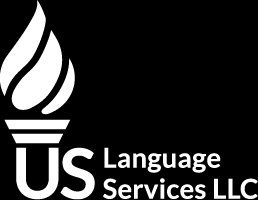How to Work in the U.S. As a Foreign-Educated Pharmacist

Working as a pharmacist is a popular and fulfilling career in the United States, and if you’ve obtained your pharmacy education in a foreign country, you may be wondering how to bring your profession to the U.S. There are many benefits to working in the U.S. as a pharmacist, and according to the U.S. Bureau of Labor Statistics, pharmacists make decent pay. Annual salaries range from $76,840 to $164,590, with the average annual pay being $128,570. Our guide helps you understand the process for working in the U.S. as a foreign-educated pharmacist and taking advantage of these benefits. We also answer essential questions like:
- What Is the Process for Working in the U.S. As a Foreign-Educated Pharmacist?
- How Much Does It Cost to Work as a Foreign-Educated Pharmacist in the U.S.?
- How Long Does It Take To Work as a Foreign-Educated Pharmacist in the U.S.?
- Are There Any Restrictions to Working as a Foreign-Educated Pharmacist in the U.S.?
- What Are the State-Specific Requirements for Foreign-Educated Pharmacists?
- What Are the Immigration Requirements for Foreign-Educated Pharmacists?
- Where Can I Get a Certified Translation?
What Is the Process for Working in the U.S. As a Foreign-Educated Pharmacist?
The process for working in the U.S. as a foreign-educated pharmacist includes obtaining certifications, passing required examinations, and obtaining a license to practice pharmacy in your chosen state. Every state handles pharmacist licensing differently, so it’s important to review your chosen state’s laws along with the rest of the steps in this process. The steps to working in the U.S. as a foreign-educated pharmacist include the following:
- The first step of this process is ensuring that your foreign education meets U.S. standards and proving your license or certification as a foreign pharmacist. This is done by applying for the National Association of Boards of Pharmacy’s (NABP) Foreign Pharmacy Graduate Examination Committee Certification (FPGEC). The FPGEC evaluates your foreign degree and license, ensuring that your education and experience meet U.S. education and experience requirements. As part of the FPGEC, you can expect to turn in original documents and certified translations of items like diplomas, academic transcripts, and licenses or official pharmacist certifications, in addition to proving your fluency in English with passing scores on the Test of English as a Foreign Language Internet-Based Test (TOEFL iBT).
- The last step in obtaining FPGEC certification is passing the Foreign Pharmacy Graduate Equivalency Examination (FPGEE). This exam is offered once per year, and you will need the NABP to issue you an authorization to test via your FPGEC application before you are able to register. You must obtain passing scores on the FPGEE to receive your FPGEC and then be eligible for state licensing.
- After passing your FPGEE and receiving your FPGEC, you will need to start the process of becoming licensed in the state you wish to work in. Every state has different requirements for aspiring pharmacists, so you will need to verify requirements with your chosen state directly. NABP provides a directory of state licensing boards and licensing requirements you can use to find more detailed information.
- Once you are licensed in your state, the final step is to ensure that you meet all ongoing state requirements, such as continuing education and license renewal requirements. You will also need to ensure that you meet immigration requirements, as a visa or a green card is required for you to legally work and live in the United States.
How Much Does It Cost to Work as a Foreign-Educated Pharmacist in the U.S.?
The cost of working as a foreign-educated pharmacist in the U.S. includes the cost of obtaining your FPGEC, including taking the FPGEE. The FPGEC costs $550, which includes a document evaluation fee and an administrative fee, and the cost of registration for the FPGEE is $650, not including any preparation materials you might need. You will also need to take the TOEFL iBT, which costs between $200 and $250 to register for depending on your country. Additionally, you must count the cost of state licensing, which ranges from around $200 to $600 total, and the cost of immigration which ranges from around $500 to several thousand dollars to complete. If you need to work with an immigration lawyer, this will cost an extra few thousand depending on your situation and the legal counsel you seek out.
How Long Does It Take To Work as a Foreign-Educated Pharmacist in the U.S.?
The process for working in the U.S. as a foreign-educated pharmacist takes a few years on average to complete, as you will need to ensure that all of the immigration, licensing, and certification steps are completed before you can officially work as a pharmacist in your chosen state. The FPGEC takes around 2 months to receive, and then you will need to prepare for the FPGEE, which takes around 5 months; it’s a good idea to start preparing for the FPGEE ahead of applying for your FPGEC to streamline the process. After these steps are completed, you will need to apply for a state license, which may take a couple of months as you gather all the necessary documents and submit them to your state’s board. The longest part of this process is immigration, and visa or green card applications may take between 1 and 2 years to be approved. An immigration lawyer may help you ensure your application wait times are on the shorter side of this average.
Are There Any Restrictions to Working as a Foreign-Educated Pharmacist in the U.S.?
If you have met all the requirements for a foreign-educated pharmacist, such as obtaining the FPCEG, you have met state-specific requirements such as obtaining a license, paying licensing fees, and taking state examinations, and you have a visa or green card that allows you to work in the U.S., you will be able to practice as a pharmacist without issue. Make sure you stay up to date with ongoing state education and license renewal requirements for pharmacists and that you are aware of any ongoing immigration requirements you might need to meet to ensure you can practice without interruption in the U.S.
What Are the State-Specific Requirements for Foreign-Educated Pharmacists?
Every state has different licensing requirements for pharmacists, and some might have varying rules and regulations surrounding foreign-educated pharmacists. However, most states require that foreign-educated pharmacists present evidence of an FPCEG and passing scores on the FPGEE. In addition to these documents, you may also need to present evidence of your foreign education and work experience, take state-specific ethics and law exams, and pay a licensing fee to complete your application. Make sure you also pay attention to ongoing requirements that your chosen state may have, such as continuing education, routine exams, and license renewal fees that you must pay every so often to keep your pharmacist license valid and active.
What Are the Immigration Requirements for Foreign-Educated Pharmacists?
Any foreign-educated pharmacist that wishes to practice in the U.S. will need to have either a visa or a green card. There are a few different options for visas, and the most popular choice is the H-1B visa for specialty occupations. Other employment-based visas for permanent workers might also be an option, or you can directly apply for a green card if you meet basic eligibility requirements. It’s important to note that you may need legal assistance as you complete the immigration process. An immigration lawyer can point you in the right direction of the visa that works for your situation and guide you through the process so your application has the best chance of being accepted smoothly and without stress.
Where Can I Get a Certified Translation?
Certified translations are an essential part of the process of becoming a foreign-educated pharmacist in the United States. You will need reliable certified translations of your original academic documents, licenses, and certifications as you apply for your FPGEC and state licensing. You may also need certified translations as part of the immigration process. At our online store, you can obtain certified translations of your important documents such as:
- Diplomas
- Academic transcripts
- Business licenses and certifications
- Resumes and employment records
- Birth certificates
Guaranteed Acceptance
All our certified to English translations are accepted by the USCIS. Our translations follow the guidelines established by the USCIS and are also accepted by educational institutions.
Most Requested Documents
FAQs
You can order most translations 24 hours a day, 7 days a week through our online store. For large projects (more than 20,000 words or 50 pages), please request a quote.


